A Plethora of Opportunities
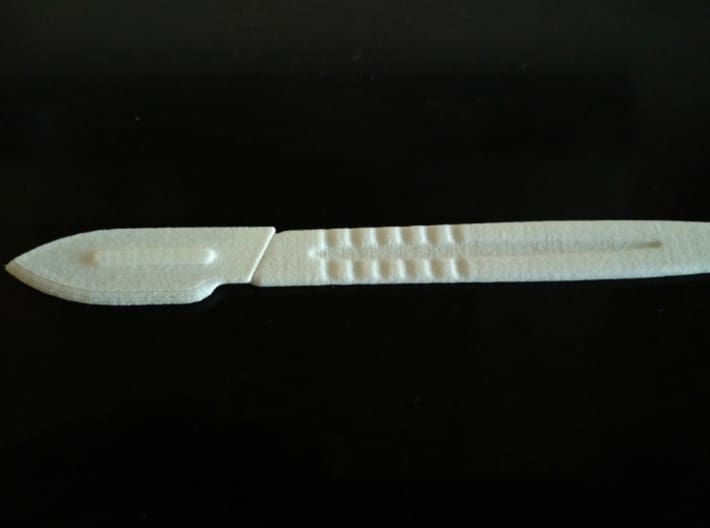
According to JAMA network, medical devices are used to diagnose, prevent, or treat medical conditions without having any chemical effect on any part of the body. Similar interpretations are provided by a number of other institutions, including the definition from the US Food and Drug Administration (FDA).
There are three classes of medical devices:
- Class I: Low-risk devices, like bandages and gloves.
- Class II: Intermediate risk devices, like pregnancy kits and X-ray machines.
- Class III: High-risk devices, like implants (e.g. spinal, orthopedic) and pacemakers.
Not all medical devices from these classes can be 3D printed. The main focus tends to be on easy-to-print pieces as well as patient-specific medical devices, which are gaining huge traction due to the personalization they offer.
Compared to conventional techniques, 3D printing makes it relatively easy to produce patient-specific medical devices with complex geometries. It also offers good bio-compatibility, as the technology uses tailor-made materials. According to the FDA, medical devices such as implants, surgical instruments, dental restorations, and external prosthetics can be 3D printed.
In the following, we present several categories of medical devices in order to determine the kinds of 3D printable medical devices.
Patient-Specific Implants
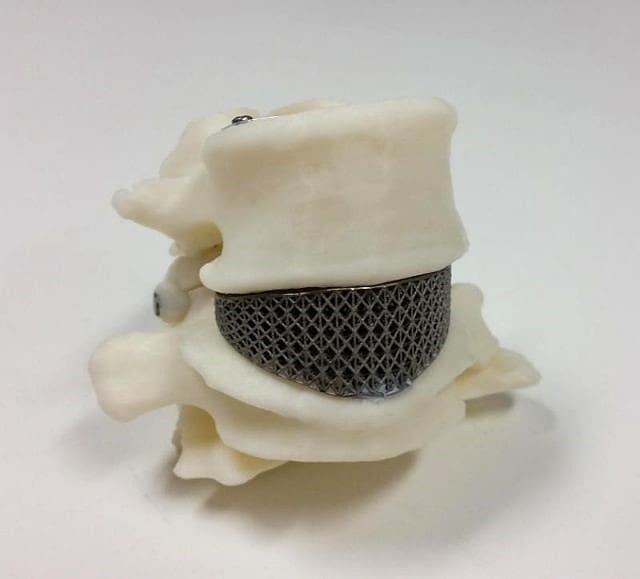
Every individual’s anatomy is unique, an important point to consider during surgery. Also, we should note that reconstructive surgeries involve high risk, as it deals with complex anatomies. Although we can design and develop patient-specific implants (PSIs), the process is generally complicated and expensive.
3D printing adds value to PSIs, as it has greater design flexibility and also offers better secondary fixation of the implants.
The Process
The first step in manufacturing a 3D printed PSI is the generation of detailed and accurate 3D images. Currently, computer tomography (CT) and magnetic resonance imaging (MRI) are two widely used methods. The resulting images are generally stored in a digital imaging and communications in medicine (DICOM) format. These three-dimensional images of the part are used to design the implant designs. This data is what’s used to design the implant, after which it is finally converted to g-code.
After 3D printing, the PSI is sterilized in preparation for surgery. Unlike conventional implants, 3D printed PSIs eliminate the risk of instability, adapting to the bone. In a way, this ensures good fixation of screws.
Ongoing Research
Othobaltic offers 3D printed hip implants made of a titanium alloy using DMLS technology. The same company also has a range of polyetheretherketone (PEEK) PSIs, such as cranial and jaw implants. The greatest advantage of PEEK is its bio-compatibility and good osseointegration properties.
According to Spineuniverse, Dr. Ralph Mobbs, a neurosurgeon in Australia, is the first to implant a 3D printed spinal implant. After removing a tumor in the neck of the patient, he inserted the implant to restore stability in the spine.
3D printing is also used to create rough or porous surfaces for dental implants. LayerWise, a company in Belgium, 3D printed a lower jaw for an 83-year-old woman’s face. They made the implant out of titanium powder and then 3D printed it using laser technology.
All of these efforts are not in vain. Research has shown that 3D printed titanium implants, made using DMLS, are successful over 90% of the time.
Prosthetics
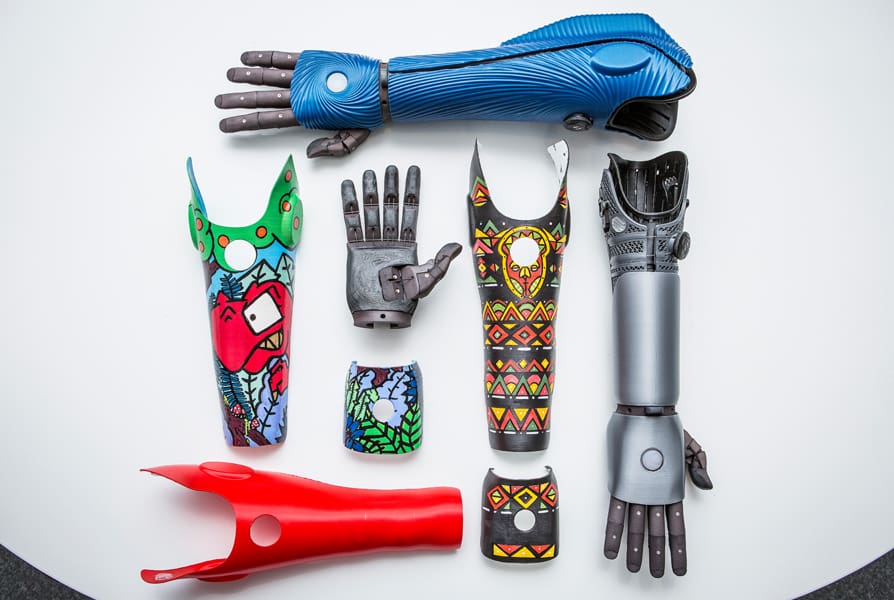
3D printed prostheses are making a huge difference in the lives of people with missing limbs. That’s because we can make them better, quicker, and cheaper than with conventional means. In general, the affordability of 3D printers and design flexibility make 3D printed prosthetics more accessible to the public.
The most common 3D printed prosthetics include arms, hands, and legs. Demonstrating the practical nature of these prosthetics are a number of companies.
One such organization is e-NABLE, a start-up that focuses on 3D printing prosthetic hands and delivering them to those in need. Their community of volunteers includes members from all around the globe.
The Hero-arm, from Open Bionics, is the world’s first clinically approved 3D printed bionic arm. It includes sensors that detect electrical signals from the user’s muscles in order to carry out desired tasks.
Drug-Infused Stents
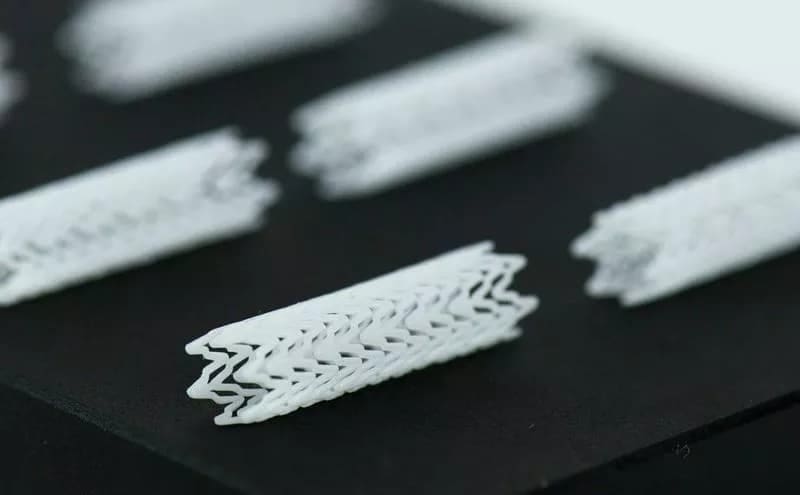
Biodegradable stents offer great potential to improve long-term patency rates by providing support for healing blood vessels. Originally these devices came into existence to improve on bare metal stents, which cause undesirable effects after vascular repair.
Particularly promising research in 3D printed stents is taking place at Northwestern Engineering. There, a team has developed a new technique called projection micro stereolithography to fabricate incredibly small structures.
With the ability to print features as small as seven microns, it’s a perfect fit for stents. Additionally, when drugs are infused into the printing materials, they slowly release at the implantation site, accelerating the healing process in the blood vessel walls.
Further research has resulted in the development of sugar-based stents for assisting in surgery around blood vessels. The non-brittle stents are 3D printed to support the vessels together during procedures.
Bandages
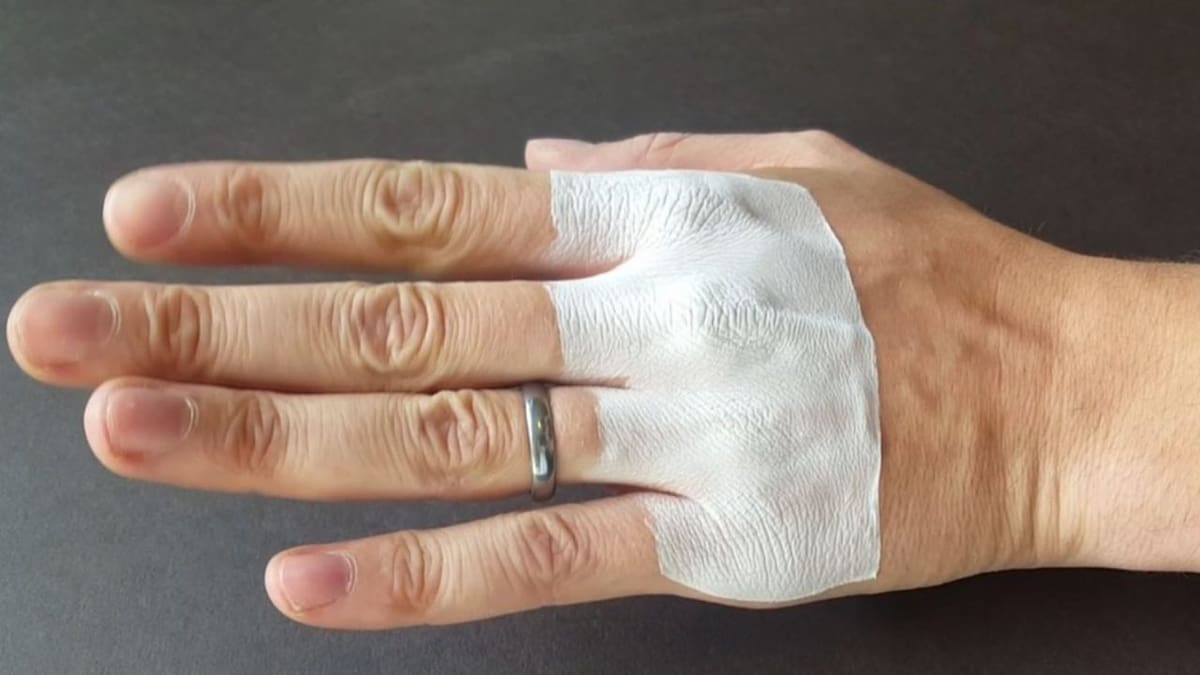
Severe burns or other wounds that penetrate many layers of skin are difficult to heal. In fact, in some developing countries, infections from serious wounds can be fatal. This is the main reason why 3D printed bandages came into existence.
Compared to their conventional counterparts, 3D printed bandages offer a number of advantages. Some of the key benefits include customizing bandages to particular wounds, infusing the material with special substances, and increasing accessibility in developing or war-torn parts of the world.
One fascinating example comes from a team of students at Grand Canyon University. They developed a low-cost, 3D printed hydro-colloidal bandage, which aids in treating infections more effectively than a regular one. Essentially, it’s partially composed of a gel-like substance that sucks in and traps bacteria.
According to Geek, researchers at the University of Toronto built a 3D bioprinter, called Printalive, which could print living bandages. This 3D printed band-aid both heals the wound and grows into and around the surrounding skin.
Surgical Instruments
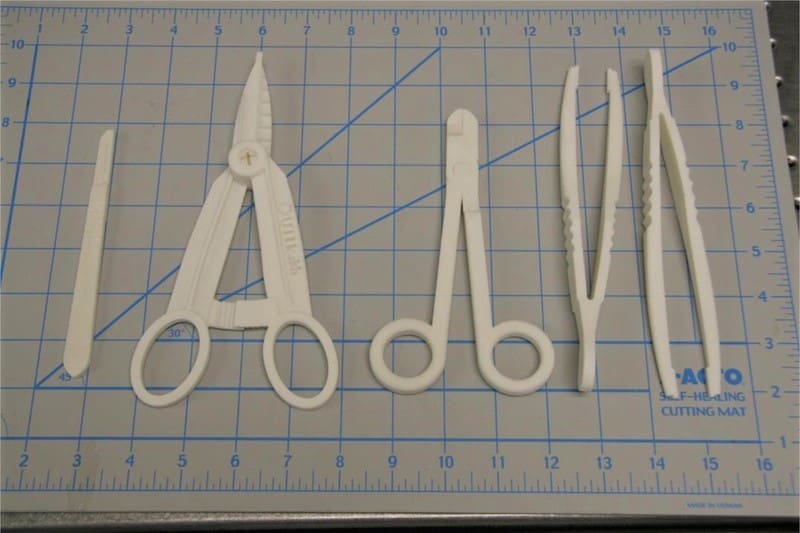
3D printed surgical instruments provide numerous advantages, such as high design flexibility and minimal production time. Needle drivers, hemostats, scalpel handles, and forceps are just a few instruments that are currently 3D printed. What makes them special is that they can easily be made in several varieties to suit particular functions.
As an example, to solve supply-chain issues, a group of Army and Navy researchers from the US developed a 3D printed surgical kit. It is composed of a Kelly hemostat, a needle driver, tissue forceps, a retractor, a scalpel handle, and scissors. The parts are made of AbSi-Ag, an engineered plastic modified with silver.
Casts
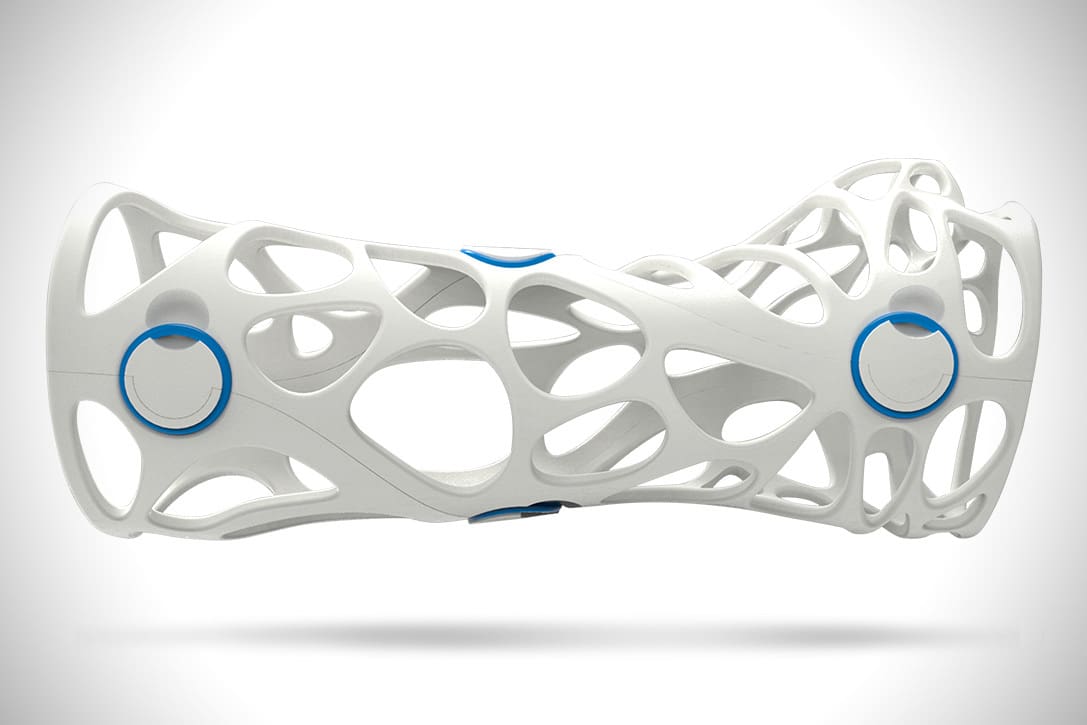
Simply by looking at them, it should be somewhat obvious that 3D printed casts have a lot to offer. Apart from a trauma-zone-localized support system, these devices are flexible, well-ventilated, hygienic, and recyclable.
According to the MIT Technology Review, a typical 3D printed cast uses an open lattice design, which is customizable to individual patients and injuries. A scanner gathers the details of the affected limb and design software generates a customized 3D model.
Such casts are often 3D printed in two pieces and placed around the broken limb until it heals. Many doctors prefer them to conventional casts because they are lightweight, breathable, waterproof, and allow for easy access to the area of injury.
Xkelet, a start-up that produces 3D printed casts, has developed an app that allows medical professionals to scan broken limbs and develop custom-made devices. The aim is, in each case, to generate a breathable structure that’s useful for assessing and redressing the wound.
The BOOMcast is an exciting 3D printed leg cast created by Fathom. It has embedded electronics that track the patient’s status from anywhere in the world. The BOOMcast was developed to deliver medical information to the patient’s doctor and map pressure.
Miscellaneous
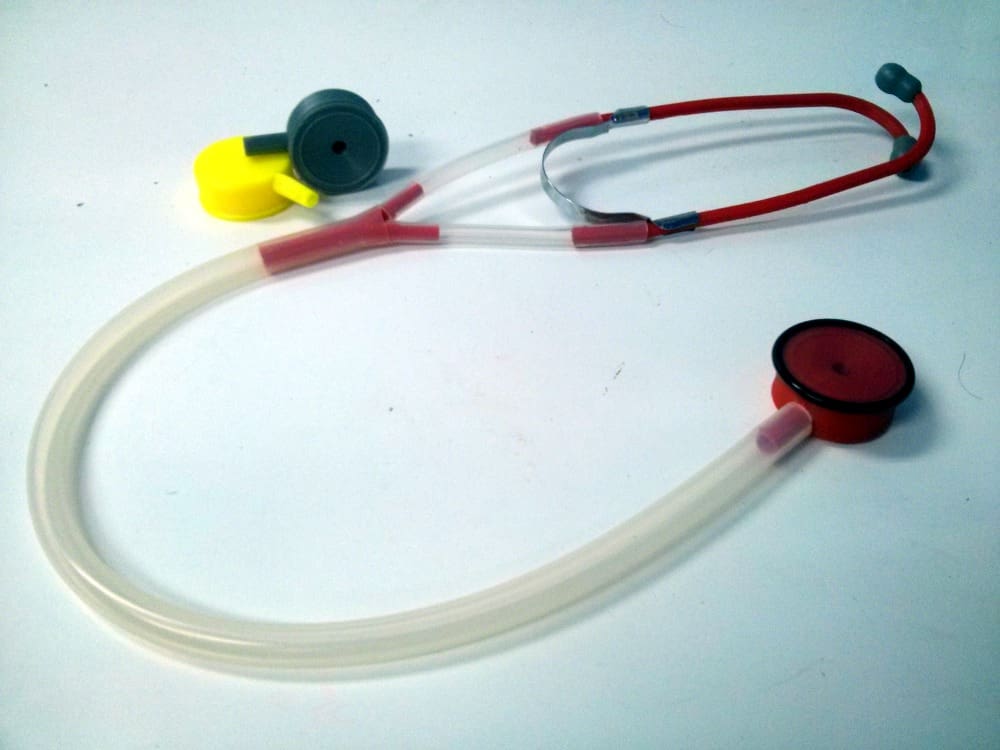
Naturally, many more medical devices are being 3D printed. The following are a few notable examples that don’t fit in the above categories.
Ear syringes can be frustrating tools for physicians and painful experiences for patients. Considering this, a start-up named Safkan designed and developed the first automated ear-cleaning device, Otoset. They collaborated with Protolabs to produce 3D printed parts using Polyjet technology and CNC machining. This device cleans and disposes of excess earwax in thirty-five seconds.

Catheters are inserted into blood vessels through the neck, upper thigh, and arm, after which they are threaded to a person’s heart. According to Scope, researchers from Stanford have developed a small, flexible silicone membrane with tiny holes that holds electrodes. They placed 3D printed custom-made catheters on the heart’s atrium to transfer the signals.
Physician Tarek Loubani, based in London, came up with the idea of 3D printing a stethoscope. His open-access template is meant to be printed using medical-grade reusable plastics. He called it Glia model and it has been clinically validated.
The device can be printed in less than three hours, and the materials cost less than three dollars. Most importantly, anyone who has access to a 3D printer and the necessary filament can make this stethoscope.
Feature image source: ge.com
License: The text of "3D Printed Medical Devices – What Can Be Printed Today?" by All3DP is licensed under a Creative Commons Attribution 4.0 International License.